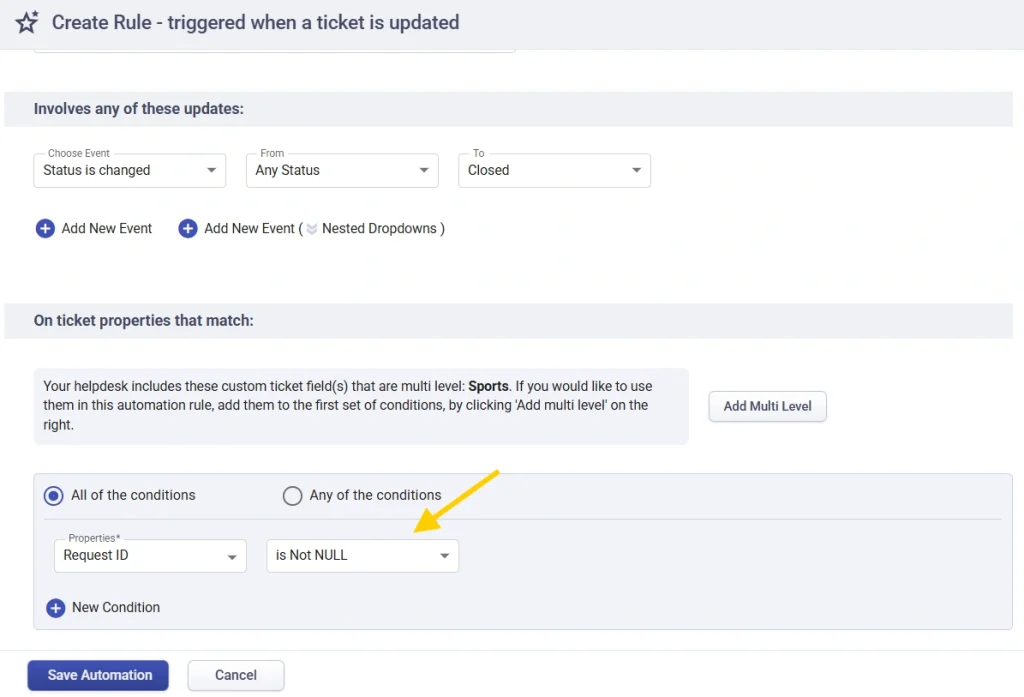When it comes to automation rules in a helpdesk solution, one of the most important things to consider is the ability to perform ‘NULL’ checks. This is particularly important in the context of automation rules because it allows you to create more complex and targeted rules that are triggered only when certain conditions are met.
In Desk365, ‘NULL’ checks can be used during ticket creation, ticket updates, or time-based triggers. Custom ticket fields based on Text Input and Paragraph Input can now check for ‘NULL’ and ‘not NULL’ entries to those fields. This enhancement allows you to create automation rule conditions based on whether a field is either not Null or Null and can be used in several use cases.
For example, you can create an automation rule that sends a webhook when a ticket is closed and a Request ID is entered.

This implies that the ticket originated from an external source, and you wish to make updates to the external system.
Likewise, in the event that a customer submits a ticket without filling out the ‘Issue Description’ field, you have the option to set up an automation rule that will automatically send an email to the contact, requesting them to provide a complete description of the issue.
This ensures that you have all the information you need to help the customer and prevents incomplete tickets from slipping through the cracks.
Other examples could be let’s say you have a custom ticket field called “Customer Feedback” that is a Paragraph Input field. You can now create an automation rule that triggers an action when a ticket has been submitted with no feedback provided. This could be used to send a follow-up email to the customer asking for their feedback or to assign the ticket to a specific agent for further investigation.
These are just a few examples of how ‘NULL’ checks in Desk365’s automation rules can be useful.
‘NULL’ checks are an essential component of automation rules in a modern helpdesk solution. By allowing you to create more targeted and effective rules, ensure data accuracy and completeness, and automate more complex workflows and processes.
If you are not currently using ‘NULL’ checks in your automation rules, it’s definitely worth exploring how they can be used to optimize your support processes and workflows.
By considering both data presence and absence, businesses can now create finely tuned rules that cater to a spectrum of scenarios.




